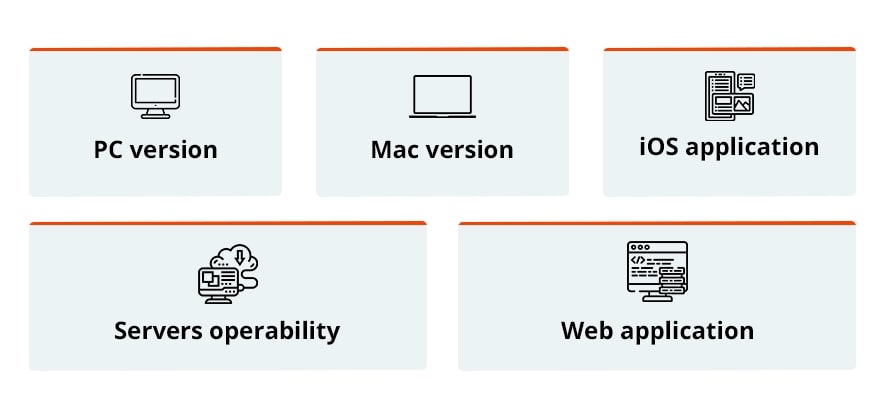Testing at a Complex Project: QATestLab Real Case
by Emma Dallas | September 3, 2019 7:34 am
While you are planning your vacation or are already enjoying a cocktail on the beach, the growth of IT projects is not going to slow down. They grow and develop, and often startups turn into huge companies with dozens of divisions. How then stay on top and maintain control over the quality of the product? Some companies handle quality assurance matters on their own, others, apply to a third-party QA[1].
How to achieve stable quality for a huge constantly developing project, at the same time maintaining its cost-effectiveness? Want to learn from the experience of a real project – read its brief summary on the QATestLab blog.
Why engage additional QA or what challenges it can solve
One of the most popular myths about a third-party QA is that independent provider only evaluates your application, and you get a list of errors, which doesn’t really help, right? Let’s see the real situations when projects apply for additional QA resources:
- approaching release date + heavy working loads;
- limited budget;
- need for additional devices[2];
- lack of QA competence.
Despite some general tendencies, every project has its specifics and reasons for engaging extra services on quality assurance. Let’s watch the example when QATestLab client, an international gambling company, applied to reach the following goals:
- Avoid law violations by checking the product for compliance with legal restrictions of the targeted regions.
- Ensure smooth transfer of the game to new servers.
- Optimize the budget via complementing in-house QA with an external team.
After the specification of project aims and requirements, a testing strategy is developed. As our experience shows, team interaction matters much as clients often worry about the communication flow. Here comes the next myth of poor interaction and weak control of the remote team activities. In this case, our specialists decided to form a team managed by a QA Lead[3] for quick and effective communication. His main duties were task distribution, adjustment of the working load of QA engineers, and timely delivery of test results.
Do not hesitate to discuss the issues you are concerned about with the QA provider because everything may be far easier than you might think.
The scope of tasks to delegate to QA provider
Depending on the nature of the developed software and the state of affairs at a project, tasks for quality assurance may differ. To deal with the above-listed tasks and verify the quality of a game, our Client requested to check the following functionality:

Functional testing
While performing this type of testing, QA engineers focus on the specifics of a product under testing. As the Client had a card game to test[4], special attention was paid to:
- correct game operations;
- random number generator (to ensure that cards are random and fair);
- bonus accrual and currency calculation;
- testing of game interruptions;
- game rules evaluation (to verify that gameplay corresponds to the rules of the game);
- collision detection and prevention mechanisms;
- tournaments testing (single-player and multiplayer modes).
Sanity and Regression testing
Continuous development presupposes constant updates and fixes, and that’s why sanity and regression tests cannot be skipped. In the case we examine, the QATestlab team performed sanity testing after each game update. Full regression testing of desktop and mobile versions were conducted after hotfixes.
Regression tests are often connected with automation testing of a frequently used functionality. Auto scripts allow saving time and resources spent on testing. QATestLab engineers explored and analyzed logs generated after auto-script execution, thus gave support to the Client’s test automation department.
Test documentation support
Project documentation helps the testing team to understand project specifics, explore the developed software and its proper functioning. Test documentation, on the other hand, holds the results of work executed by the QA team[5]: detected bugs with steps for their reproducing, recommendations on improvement, etc.
Test cases and checklists should be regularly updated and actualized due to the dynamic requirements of the project. This enabled the large team of our Client to take into account all recent developments and keep the releases of new versions stable.
Final word on engaging professional QA at a project
There is pretty much information on the Internet about third-party QA providers, pluses and minuses of such cooperation, possible difficulties, etc. However, a picture’s worth a thousand words and a real-life example can tell you much more. As for the case we addressed, QATestLab team assisted in the successful achievement of the set goals and continues the work with the Client constantly ensuring the quality of the product. Moreover, as a result of effective cooperation, QATestLab has been engaged at another Client’s project to perform functional testing of the human resource management system.
Learn more from QATestLab
Related Posts:
- a third-party QA: https://qatestlab.com/
- additional devices: https://blog.qatestlab.com/2019/08/27/devices-game-testing/
- QA Lead: https://blog.qatestlab.com/2019/04/25/qa-leads-responsibilities/
- game to test: https://blog.qatestlab.com/2019/05/17/check-game-compatibility/
- QA team: https://blog.qatestlab.com/2019/05/07/building-qa-team/
- Money Matters: In-House vs. Independent Testing: https://blog.qatestlab.com/2023/06/14/inhouse-independent-qacost/
- How to develop a crypto game to impress the market?: https://blog.qatestlab.com/2022/06/07/crypto-games-testing/
- Software Testing for Hyper-Casual Games: Simple Doesn’t Mean Easy: https://blog.qatestlab.com/2021/07/28/testing-hypercasual-games/
Source URL: https://blog.qatestlab.com/2019/09/03/complex-project-testing/

